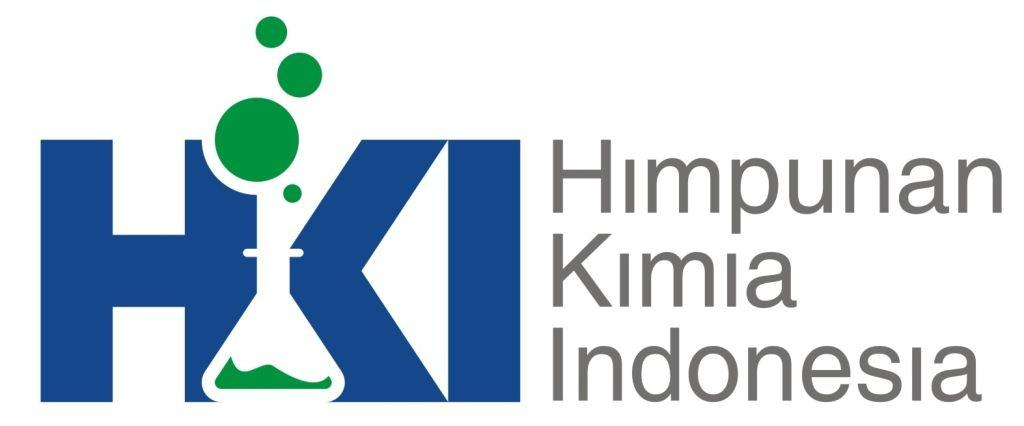Steroids from The Stem Bark of Dysoxylum nutans (Meliaceae) and Their Cytotoxic Effect Against MCF-7 Breast Cancer Cell Lines
Abstract
Three steroids, 3α-hydroxystigmast-5(6), 22-diene-7-one (1), stigmasterol (2) and 3-hydroxy-7β-methoxystigmast-5(6)-ene (3), were isolated from the stem bark of Dysoxylum nutans. The chemical structures were identified by spectroscopic data, which includes IR, 1D-NMR, 2D-NMR, and HR-TOFMS as well as by comparing previously reported spectral data. Compounds 1-3 were tested for cytotoxic effect against MCF-7 breast cancer cell lines and compound 1 showed the strongest cytotoxic activity with an IC50 value of 20.13 ± 0.06 μM.
Keywords
References
Cao P, Liang G, Gao X, Wang X, Li Z. 2013. Three new nor-dammarane triterpenoids from Dysoxylum hainanense with particular cytotoxicity against glioma cell line. Archives of Pharmacal Research. 36(3): 322-326.
Cayme JM, Ragasa CY. 2004. Structure elucidation of β-stigmasterol and β-sitosterol from Sesbania grandifora [Linn.] Pers. and β-carotene from Heliotropium indicum Linn. by NMR spectroscopy. Kimika. 20(1): 5-12.
Das M, Saikia PJ, Sarma HN. 2013. Crude bark extract of Dysozylum alliarium induces alteration in histological structures and VEGF-C expression in uterus during days 4–7 of gestation in albino rat. Reproductive Medicine and Biology. 12(3): 85-98.
Farabi K, Harneti D, Nurlelasari MR, Hidayat AC, Supratman U, Awang K, Shiono Y. 2017. Cytotoxic steroids from the bark of Aglaia argentea (Meliaceae). CMU Journal of Natural Sciences. 16(4): 293-306.
Gopalakrishnan S, Lakshmi SYS, Banu F. 2015. Comparison of antimicrobial activities of silver nanoparticles synthesized from Dysoxylum parasiticum. Indian Journal of Medicine and Healthcare. 4(2): 1–5.
Govindachari TR, Suresh G, Kumari K, Rajamannar T, Partho PD. 1999. Nymania-3: a bioactive triterpenoid from Dysoxylum malabaricum. Fitoterapia (Milano). 70(1): 83-86.
Hadisaputri YE, Miyazaki T, Suzuki S, Yokobori T, Kobayashi T, Tanaka N, Inose T, Sohda M, Kuwano H. 2012. TNFAIP8 overexpression: clinical relevance to esophageal squamous cell carcinoma. Annals of surgical oncology. 19(3): 589-96.
Han ML, Zhao JX, Liu HC, Ni G, Ding J, Yang SP, Yue JM. 2015. Limonoids and Triterpenoids from Dysoxylum mollissimum var. glaberrimum. Journal of Natural Products. 78(4): 754-761.
Heyne, K. 1982. “The Useful Indonesian Plants”, Research and Development Agency, Ministry of Forestry, Jakarta, Indonesia, 729-740.
Hu J, Song Y, Li H., Yang B, Mao X, Zhao Y, Shi X. 2014a. Cytotoxic and anti–inflammatory tirucallane triterpenoids from Dysoxylum binectariferum. Fitoterapia. 99: 86-91.
Hu J, Song Y, Li H, Mao X, Zhao Y, Shi X, Yang B. 2014b. Antibacterial and cytotoxic triterpenoids from the ethanol extract of Dysoxylum densiflorum (Blume) Miq. Phytochemistry Letters. 10: 219-223.
Huang HL, Wang CM, Wang ZH, Yao MJ, Han GT, Yuan JC, Gao K, Yuan CS. 2011. Tirucallane-type triterpenoids from Dysoxylum lenticellatum. Journal of Natural Products. 74(10): 2235-2242.
Huang W, Li Y, Jiang J. 2009. Chemical constituents from Hedyotis diffusa. China Journal of Chinese Materia Medica. 34(6): 712-4.
Ismail IS, Nagakura Y, Hirasawa Y, Hosoya T, Lazim MIM, Lajis NH, Morita H. 2009. Acutaxylines A and B, two novel triterpenes from Dysoxylum acutangulum. Tetrahedron Letters. 50(34): 4830-4832.
Jiang K, Chen LL, Wang SF, Wang Y, Li Y, Gao K. 2015. Anti-inflammatory terpenoids from the leaves and twigs of Dysoxylum gotadhora. Journal of Natural Products. 78(5): 1037-1044.
Kurimoto SI, Kashiwada Y, Lee KH, Takaishi Y. 2011. Triterpenes and a triterpene glucoside from Dysoxylum cumingianum. Phytochemistry. 72(17): 2205-2211.
Luo XD, Wu SH, Wu DG, Ma YB, Qi SH. 2002. Novel antifeeding limonoids from Dysoxylum hainanense. Tetrahedron. 58(39): 7797-7804.
Lakshmi V, Pandey K, Kapil A, Singh N, Samant M, Dube A. 2007. In vitro and in vivo leishmanicidal activity of Dysoxylum binectariferum and its fractions against Leishmania donovani. Phytomedicine. 14(1): 36-42.
Pettit GR, Numata A, Cragg GM, Herald DL, Takada T, Iwamoto C, Riesen R, Schmidt JM, Doubek DL, Goswami A. 2000. Isolation and structures of schleicherastatins 1− 7 and schleicheols 1 and 2 from the teak forest medicinal tree Schleichera oleosa. Journal of Natural Products. 63(1): 72-8.
Ragasa CY, Ng VAS, De Los Reyes MM, Mandia EH, Oyong GG, Shen CC. 2014. Chemical constituents and cytotoxicity of the leaves of Dysoxylum gaudichaudianum (A. Juss.) Miq. Der Pharma Chemica. 6(5): 182-187.
Skehan P, Storeng R, Scudiero D, Monks A, McMahon J, Vistica D, Warren JT, Bokesch H, Kenney S, Boyd MR. 1990. New colorimetric cytotoxicity assay for anticancer-drug screening. JNCI: Journal of the National Cancer Institute. 82(13): 1107-1112.
Simon A, Allais DP, Duroux JL, Basly JP, Durand-Fontanier S, Delage. 1998. Inhibitory effect of curcuminoids on MCF-7 cell proliferation and structure–activity relationships. Cancer Letters. 129(1):111-116.
Supratman U, Naibaho W, Salam S, Maharani R, Hidayat AT, Harneti D, Nurlelasari, Shiono Y. 2019. Cytotoxic triterpenoids from the bark of Chisocheton patens Blume (Meliaceae). Phytochemistry letters. 30: 81-7.
Tang T, Liao SG, Na Z, Li Y, Xu YK. 2012. Dysoxylentin A, the first 21-nortriterpenoid bearing a 2-(propan-2-ylidenyl) furan-3 (2H)-one, from Dysoxylum lenticellatum. Tetrahedron Letters. 53(9): 1183-1185.
Wah LK, Abas F, Cordell GA, Ito H, Ismail IS. 2013. Steroids from Dysoxylum grande (Meliaceae) leaves. Steroids. 78(2): 210-219.
aYan HJ, Wang JS, Kong LY. 2014. Cytotoxic dammarane-type triterpenoids from the stem bark of Dysoxylum binecteriferum. Journal of Natural Products. 77(2): 234-242.
bYan HJ, Wang JS, Kong LY. 2014. Cytotoxic steroids from the leaves of Dysoxylum binectariferum. Steroids. 86: 26-31.
Zhang XY, Li Y, Wang YY, Cai XH, Feng T, Luo XD. 2010. Tirucallane-type alkaloids from the bark of Dysoxylum laxiracemosum. Journal of Natural Products. 73(8): 1385-1388.
Zhou B, Shen Y, Wu Y, Leng Y, Yue JM. 2015. Limonoids with 11β-Hydroxysteroid Dehydrogenase Type 1 Inhibitory Activities from Dysoxylum mollissimum. Journal of Natural Products. 78(8): 2116-2122.
Zou YH, Liu WT, Zhang JX, Xiang DC. 2017. Triterpenoids from the bark of Dysoxylum hainanense and their anti-inflammatory and radical scavenging activity. Fitoterapia. 121: 159-163.
DOI: 10.15408/jkv.v6i2.15976
Refbacks
- There are currently no refbacks.
Copyright (c) 2020 Tri Mayanti

This work is licensed under a Creative Commons Attribution-ShareAlike 4.0 International License.

